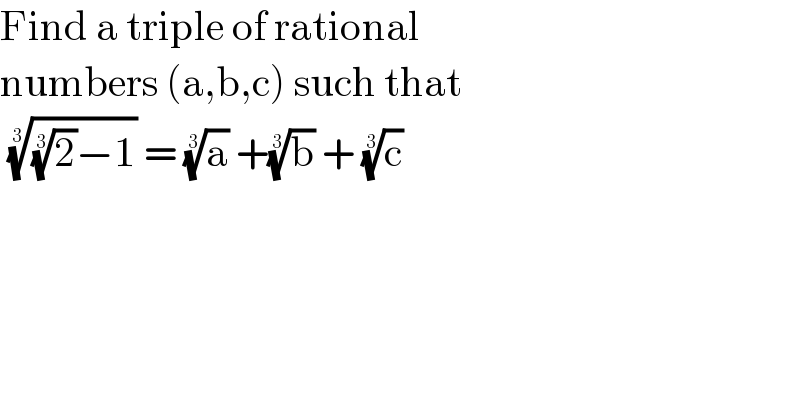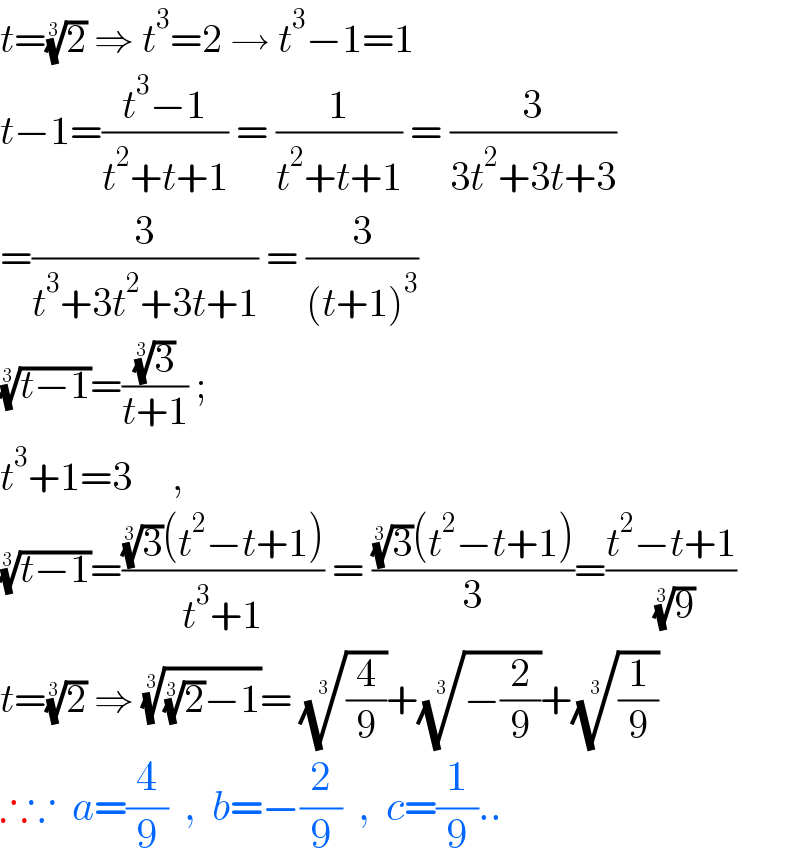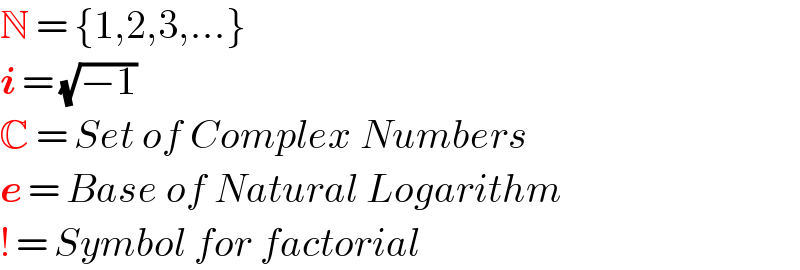
Question and Answers Forum
Question Number 152281 by john_santu last updated on 27/Aug/21

Answered by puissant last updated on 27/Aug/21

Commented by Rasheed.Sindhi last updated on 27/Aug/21

| ||
Question and Answers Forum | ||
Question Number 152281 by john_santu last updated on 27/Aug/21 | ||
 | ||
Answered by puissant last updated on 27/Aug/21 | ||
 | ||
| ||
Commented by Rasheed.Sindhi last updated on 27/Aug/21 | ||
 | ||